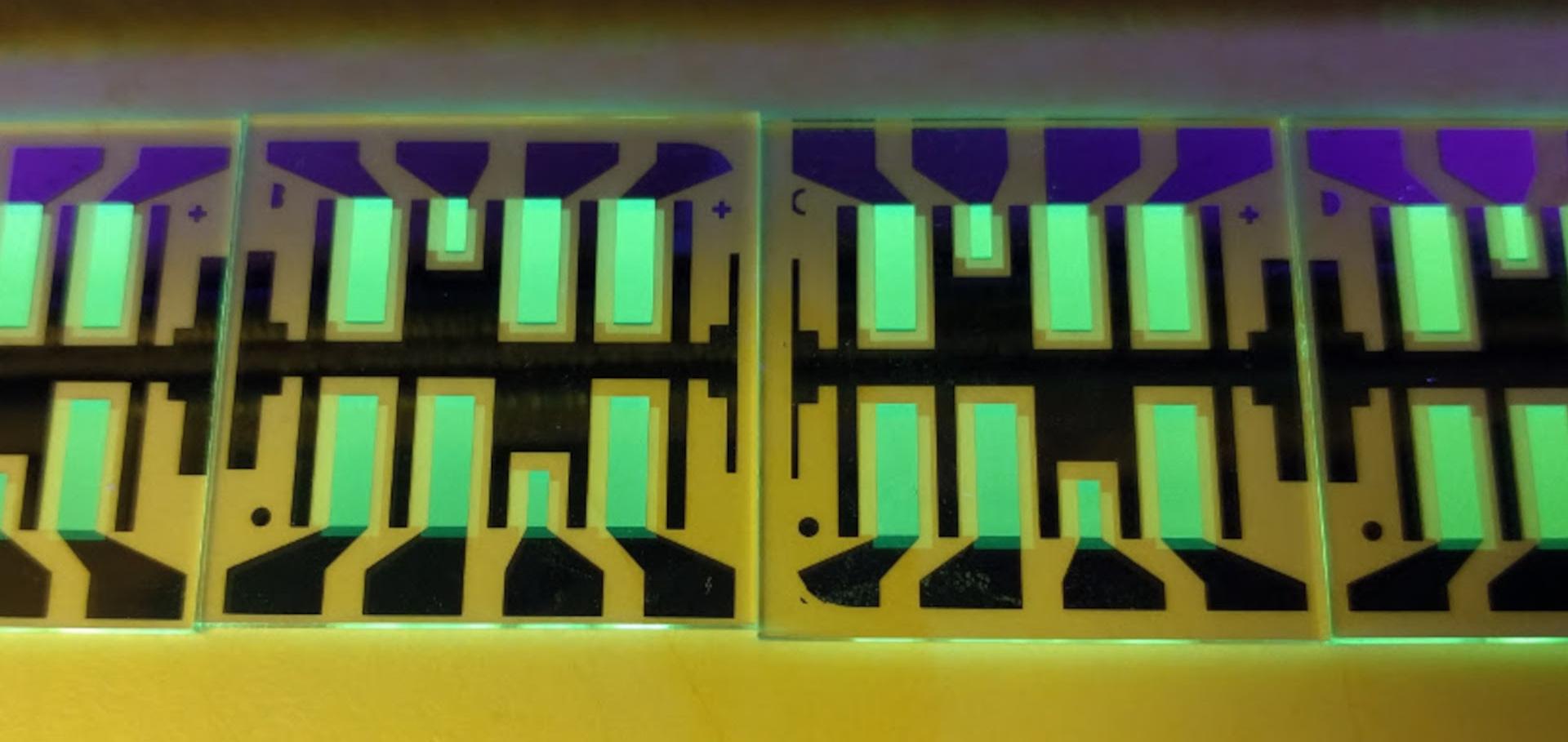Dicyanovinyl substituted oligothiophenes: Thermal stability, mobility measurements, and performance in photovoltaic devices
Solar Energy Materials and Solar Cells 95:12 (2011) 3171-3175
Abstract:
A series of dicyanovinyl-oligothiophenes are investigated concerning their thermal stability, absorption in thin film, and hole mobility. Due to very high extinction coefficients, these materials are interesting for application as donor in solar cells. The quinquethiophene DCV2-5T, which shows a hole mobility of 2.2×105 cm2/Vs, is used as donor material in a flat heterojunction organic small molecule solar cells. Despite a very thin donor layer of only 6 nm, these devices exhibit in a planar heterojunction with 15 nm C60 an efficiency of up to 2.8% with a fill factor of up to 58%, a short circuit current density of 5.2 mA/cm2, an open circuit voltage of 1.03 V, and an external quantum efficiency of 30% in the green spectral range. © 2011 Elsevier B.V. All rights reserved.Near-infrared absorbing semitransparent organic solar cells
Applied Physics Letters 99:19 (2011)
Abstract:
We present efficient, semitransparent small molecule organic solar cells. The devices employ an indium tin oxide-free top contact, consisting of thin metal films and an additional organic capping layer for enhanced light in/outcoupling. The solar cell encorporates a bulk heterojunction with the donor material Ph2-benz-bodipy, an infrared absorber. Combination of Ph2-benz-bodipy with C60 as acceptor leads to devices with high open circuit voltages of up to 0.81 V and short circuit current densities of 5-6 mA/cm2, resulting in efficiences of 2.2%-2.5%. At the same time, the devices are highly transparent, with an average transmittance in the visible range (400-750 nm) of up to 47.9%, with peaks at 538 nm of up to 64.2% and an average transmittance in the yellow-green range of up to 61.8. © 2011 American Institute of Physics.Effect of concentration gradients in ZnPc:C60 bulk heterojunction organic solar cells
Solar Energy Materials and Solar Cells 95:11 (2011) 2981-2986
Abstract:
A concentration gradient in a mixed absorber layer with increasing content of donor (acceptor) towards the hole (electron) collecting contact could improve the charge carrier collection in bulk heterojunction organic solar cells. We study p-i-metal type solar cells where the gradient in a 45 nm thick ZnPc:C absorber layer is introduced by varying the deposition rate during co-evaporation. It is shown that the observed increase in the performance is mainly caused by a better energy level alignment and reduced recombination at the p-side. A significant influence on charge carrier transport is not observed. However, regions with a concentration of less than 20% of one component do not fully contribute to the photocurrent. Voltage dependent external quantum efficiency data are used to identify the photoactive regions. © 2011 Elsevier B.V. All rights reserved.Determining the C60 molecular arrangement in thin films by means of X-ray diffraction
Journal of Applied Crystallography 44:5 (2011) 983-990
Abstract:
The electrical and optical properties of molecular thin films are widely used, for instance in organic electronics, and depend strongly on the molecular arrangement of the organic layers. It is shown here how atomic structural information can be obtained from molecular films without further knowledge of the single-crystal structure. C60 fullerene was chosen as a representative test material. A 250 nm C60 film was investigated by grazing-incidence X-ray diffraction and the data compared with a Bragg-Brentano X-ray diffraction measurement of the corresponding C60 powder. The diffraction patterns of both powder and film were used to calculate the pair distribution function (PDF), which allowed an investigation of the short-range order of the structures. With the help of the PDF, a structure model for the C60 molecular arrangement was determined for both C60 powder and thin film. The results agree very well with a classical whole-pattern fitting approach for the C60 diffraction patterns. © 2011 International Union of Crystallography.Synthesis of thiophene-substituted aza-BODIPYs and their optical and electrochemical properties
Tetrahedron 67:37 (2011) 7148-7155


